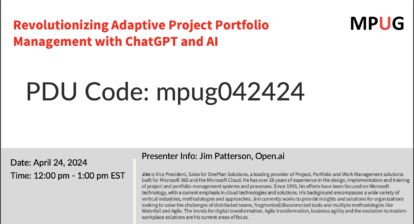
Introduction
One of the principles of quality is that it’s customer oriented. The customer judges a product’s quality by its ability to satisfy his or her problems and needs and by meeting his or her expectations. What this means is that the customer ultimately decides if quality is acceptable. When you hear the word quality, what comes to your mind? The expectations cover a broad area such as cost, minimal defects, reliability, good service level, competitiveness, and so on. Most people would also say quality depends on what content (e.g., tasty food or new clothes) you are using and how it compares to other things of a similar kind. So, let’s look at a few examples of real quality that is customer-oriented.
IN-N-OUT Burger
They make my favorite hamburgers because they taste delicious. I chew it with a contented sigh because it’s a quality product you can taste, it’s consistent, and is delivered in a quick friendly way. The first store opened 75 years ago in Baldwin Park in the metroplex of Los Angeles. Today they are in almost 400 locations mostly in California, Arizona, and Texas, with a few in Utah, Oregon, and Colorado. New locations are planned for Washington State, New Mexico, and Tennessee. They were California’s first drive-thru and eventually became a beloved cultural icon.
So, let’s look at the “secret sauce” ways they treat quality.
- As with all locations, fresh ingredients will be supplied to the store from IN-N-OUT. Hamburger patties are made from 100% American beef. Whole chucks are boned and ground by their own butchers and are free of fillers and preservatives. All patties are produced and delivered throughout the week to the stores and are never frozen.
- They get their “best buns” custom made from Puritan Bakery located in Carson (near Los Angeles), a significant improvement over supermarket offerings.
- French fries are prepared fresh in 100% sunflower oil only using fresh selected potatoes.
- Fresh iceberg lettuce is cored, washed, and separated on the board, then stored in one-gallon containers in the fridge.
- Fresh tomatoes are washed, then cored with a knife and hand-sliced using an eight-inch, highly precise French knife. Bermuda onions are sliced using the same French knife. Slices of tomatoes and onions are about the same size.
- The special proprietary condiment is called the “spread.” It’s the perfect complement to the flawlessly grilled patty, melting cheese, and toasted bun.
As you can see, IN-N-OUT is committed to quality you can taste and enjoy. They have two service quality rules: 1. The customer is always right and 2. If the customer is wrong, go back to rule 1.
What I really like about IN-N-OUT is that they are a family-owned business, have no franchises, offer a limited menu, and buy their ingredients wholesale to keep waste and prices down. This means they can afford to pay their starting employes (called “associates”) about $17/hour. You can tell the “associates” are happy to work there because of the pay, benefits, flexibility, free shift meals, and endless advancement opportunities. Today, the average store manager has been with the company for more than fifteen years, and earns more than $180,000 per year. The senior management (divisional and regional) all started out as “associates.”
Orvis
This company is the oldest mail-order business (165+ years) in the country and a trusted source of fly-fishing gear, dog essentials, travel goods and sportswear for men and women. I buy a lot of my clothes from Orvis because they are wonderfully comfortable and durable. Orvis’ quality is hard to beat, as is its value. If it fits you, you will love it.
Most of my outdoor pants, shirts and coats come from Orvis. When you look at the details (i.e., natural soft fibers, stitching, lining and buttons) of their clothes, you can see and feel the high quality that usually exceeds my expectations, plus they have free returns if you are not happy. Their quality products help to maintain customer satisfaction and loyalty and reduce the risk and cost of replacing faulty goods.
Orvis is a family-owned business from Vermont with over four hundred stores in the United States and they donate 5% of its pre-tax profits annually to preserving wildlife and habitat throughout the world.
Quality in IT Projects
To have higher levels of customer satisfaction, organizations need to determine the quality standards they want to meet and document them in the Quality Management Plan. This quality planning (QP) mindset includes the working roles of quality assurance (QA) and quality control (QC) which focus on the proper activities needed to operationally satisfy the respective quality goals.
The QA process reviews the state of the project from its ability to deliver the required result (e.g., installation and a satisfied customer). The QC approach (e.g., inspections and tests) covers the tactical procedures to measure the quality of the project.
Project quality improvement (QI) is the process of continually measuring the quality of all activities and taking corrective action until the team achieves the desired quality. QI can lead to reduced costs by having a focus on greater efficiency in processes and systems which can minimize the occurrence of defects.
Another benefit of having quality standards is that it can boost your organization’s reputation, brand value, and meet industry standards. As you can see, quality doesn’t exist in the abstract and is an ongoing activity like risk management.
“Quality is not an act; it is a habit.” – Aristotle
Your thoughts in the comment section below are welcomed.
Related Content
Reducing Risks & Boosting Quality with External Evaluations
How Risk and Quality Management are Interlinked
The Importance of Considering Quality and Change in Requirements Management
Read more articles by Ronald B. Smith, MBA, PMP
Elevate your project management skills and propel your career forward with an MPUG Membership. Gain access to 500+ hours of PMI-accredited training, live events, and a vibrant online community. Watch a free lesson and see how MPUG can teach you to Master Projects for Unlimited Growth. JOIN NOW







